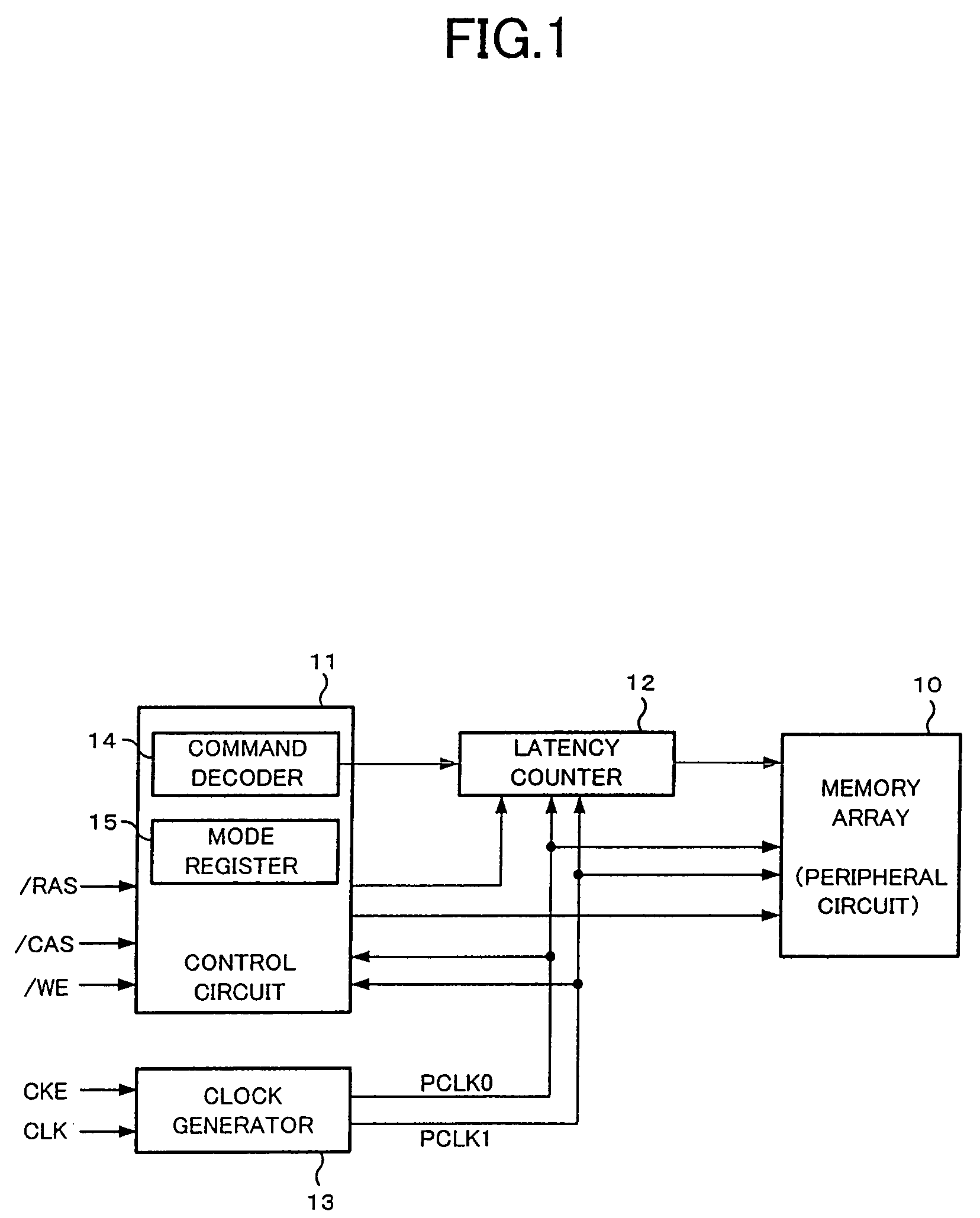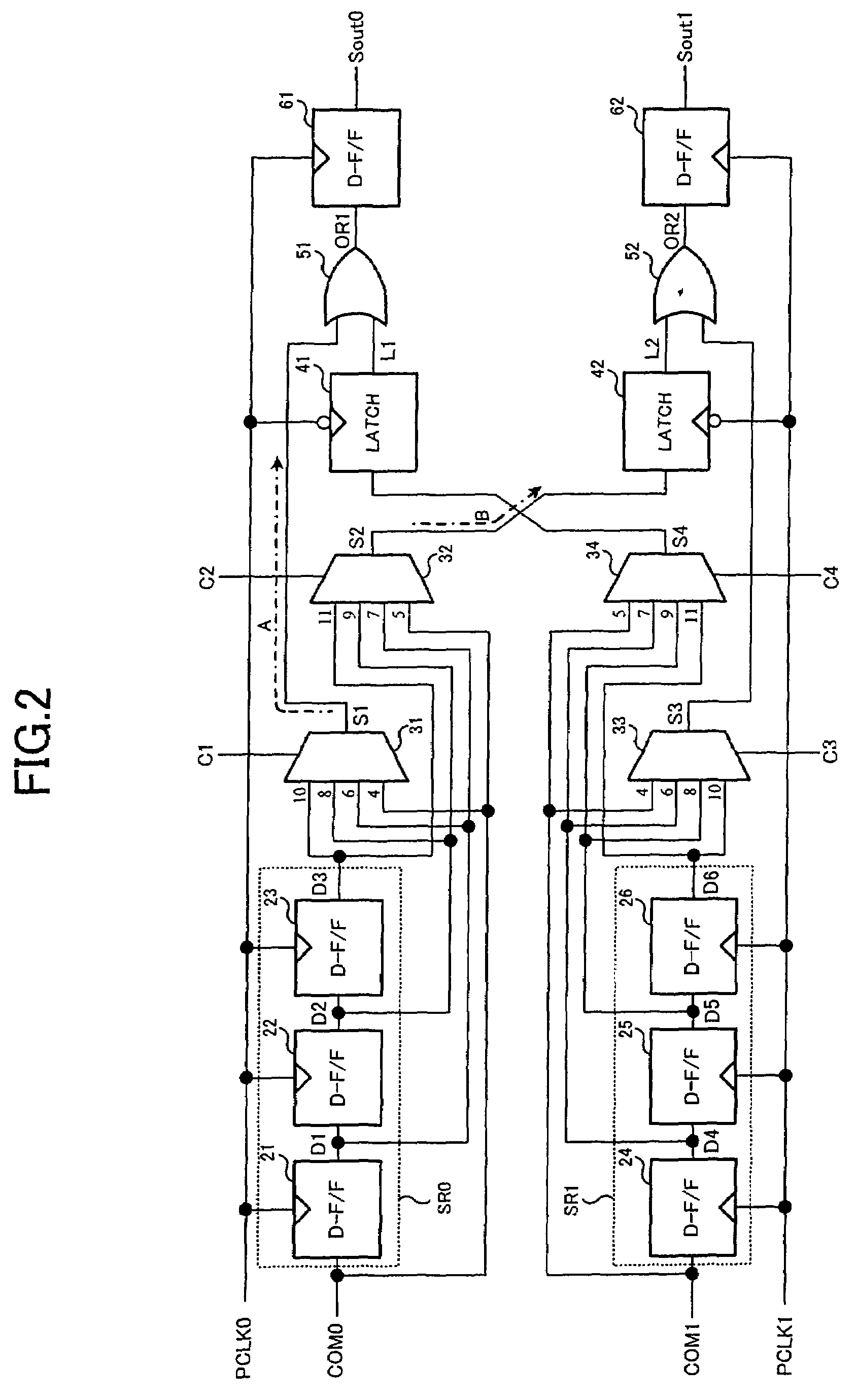Synchronous semiconductor memory device
a semiconductor and memory device technology, applied in the direction of information storage, static storage, digital storage, etc., can solve the problems of increasing the total consumption current, increasing the speed of the external clock, and increasing the required latency, so as to reduce the consumption current, increase the margin of operation timing, and control easily and immediately
- Summary
- Abstract
- Description
- Claims
- Application Information
AI Technical Summary
Benefits of technology
Problems solved by technology
Method used
Image
Examples
Embodiment Construction
[0036]Embodiments of the present invention will be described hereinafter with reference to accompanying drawings. In this embodiment, a synchronous semiconductor memory device to which the present invention applied is, for example, a DDR-SDRAM having a latency counter for counting latencies set for various commands.
[0037]FIG. 1 is a block diagram showing a principal configuration of a synchronous semiconductor memory device of this embodiment. The synchronous semiconductor memory device as shown in FIG. 1 includes a memory array 10, a control circuit 11, a latency counter 12, and a clock generator 13. Actually the synchronous semiconductor memory device includes many other components, but only components related to the function based on the present invention are shown in FIG. 1.
[0038]In the above-mentioned configuration, the memory array 10 includes a plurality of memory cells formed at intersections of a plurality of word lines and a plurality of bit lines arranged in a matrix, and...
PUM
 Login to View More
Login to View More Abstract
Description
Claims
Application Information
 Login to View More
Login to View More - R&D
- Intellectual Property
- Life Sciences
- Materials
- Tech Scout
- Unparalleled Data Quality
- Higher Quality Content
- 60% Fewer Hallucinations
Browse by: Latest US Patents, China's latest patents, Technical Efficacy Thesaurus, Application Domain, Technology Topic, Popular Technical Reports.
© 2025 PatSnap. All rights reserved.Legal|Privacy policy|Modern Slavery Act Transparency Statement|Sitemap|About US| Contact US: help@patsnap.com



